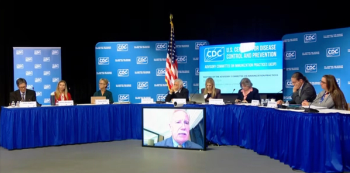
Expert Ponders Whether Remaining Stockpiles of Smallpox Virus Should be Destroyed
Raymond S. Weinstein, a clinical associate professor of medicine at Georgetown University School of Medicine in Washington, D.C. and a research professor at George Mason University in Manassas, Va., ponders the question of whether the remaining stockpile of variola -- which is currently in the United States at the Centers for Disease Control and Prevention (CDC) and in Russia at the State Research Centre of Virology and Biotechnology -- should be destroyed.
In a policy review paper in
Weinstein writes, "Today's science is capable, through genetic manipulation, of re-creating a highly virulent smallpox-like virus from a closely related poxvirus or even from scratch. But perhaps what we should fear even more is nature creating it for us, as it so efficiently did once before from the still-existent progenitors of variola. The possibility is certainly not unthinkable that nature could once again fashion smallpox from a near relative poxvirus or even create a new, smallpox-like human pathogen from a clinically similar but more genetically divergent zoonotic poxvirus, such as monkeypox. Several recent reviews have reported an increasing prevalence of human monkeypox since smallpox eradication and the cessation of vaccinia vaccination. The possible re-creation of smallpox by either natural or modern laboratory means would render moot any argument regarding the destruction of remaining stockpiles of smallpox virus in the mistaken belief that it would be for the benefit and protection of mankind."
Reference: Weinstein RS. Should remaining stockpiles of smallpox virus (variola) be destroyed? Emerg Infect Dis. Vol. 17, No. 4. April 2011.
Newsletter
Stay prepared and protected with Infection Control Today's newsletter, delivering essential updates, best practices, and expert insights for infection preventionists.






